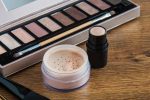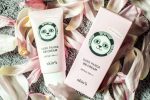Take a closer look at your face. What skin types do we have and which one is yours?

Girls,
I’m certain that you aren’t 100% sure what type your skin exactly is. You know that there is a few of them and this is basically it, right? At some point in my life I wasn’t sure either which type my face skin is. On some occasions I thought it was dry, whereas there were days that I considered my complexion as oily.
When it found myself lost in all of these skin types, I decided to explore the topic. This research was supposed to make my life easier, and it did, so now I want to share my discovery with you all.
VARIOUS SKIN TYPES
Why do we have various skin types? Where do the differences come from?
It all is written in our genes, therefore we don’t have much of an influence over the fact what type of skin we have. Don’t forget though that if conditioned the right way, it can be far smoother, better nourished and simply more beautiful. The problem is when we don’t pay enough attention to our skin needs or when we apply just any cosmetics that are frequently ill-matched. In such situations the problems that we face might become even more serious. For example, if skin is dry, it gets even more dehydrated and rough when we remain blind to what it really craves for.
Our skin’s condition is adversely influenced by, among others:
- unhealthy lifestyle habits – stress, constant rush, unbalanced diet;
- various kinds of diseases, especially skin diseases;
- external factors – sun, wind, toxins;
- improper care – ill-matched cosmetics, lack of makeup removal.
The conclusion is as follows: we can’t change our skin type because it’s ascribed to us but we can make problems of a particular skin type less severe so complexion can be beautiful again 🙂
WHAT SKIN TYPES DO WE HAVE?
There are three basic skin types: dry, normal and oily. Still, they aren’t the only categories we use to define our skin type with. There are also intermediate skin types such as: combination, sensitive or skin types that are connected with particular problems (e.g. couperose, acne-prone, atopic). What are the differences between them? Let me invite you to a short characteristics.
- Normal skin type
Normal skin is in the best condition of all skin types. Smooth, soft, elastic and well-supplied with blood. It doesn’t feature any blemishes or wrinkles, it maintains the optimal level of moisturisation. Simply, it’s healthy and behaves the way it should do. Sadly, normal skin type mainly occurs in kids before their puberty period, so we shouldn’t rather count on our complexion being normal. It’s the unattainable ideal.
- Dry skin type
Insufficient hydration is mostly caused by poor sebum production when compared to normal skin type. For that reason, skin loses water that is found crucial for maintaining its good health. Skin starts featuring dry patches, complexion is slowly turning dull and flakes off. On the flip side, this skin type rarely features blackheads. Sadly, dry skin type is fast to age.
- Oily skin type
As it’s easy to guess, greasy skin is a completely opposite situation to the one described above, which is hyperproduction of sebum. If the sebaceous glands work like crazy, then our skin might shine and feature enlarged skin pores. Oily skin type is also accompanied with various forms of acne, yet it almost never features broken capillaries because it’s rather thick.
- Combination skin type
As the name speaks for itself, it’s a kind of mixture so it’s a skin type featuring qualities of both oily and dry skin types. In most cases, dry skin areas are located in cheeks and temples – this is where you can spot dry skin patches. When it comes to excessive sebum production, it affects so-called T-zone, which comprises of forehead, nose and chin. Basically, combination skin type might be perceived as the most troublesome one to take care of since it requires application of two types of cosmetics.
- Sensitive skin type
Sometimes it’s also called reactive skin because it reacts aversively to various types of external stimulus (in fact internal such as diet, too). It’s often accompanied with redness, itchiness, tension and irritation. This type of adverse reaction occurs when we apply an ill-matched cosmetic, get stressed or take some medication. Moreover, sensitive skin type might react in a wrong way to various factors. What’s important, this is not a separate skin type since sensitive skin can be dry, normal and oily.
- Acne-prone skin type
This in turn is a variation of oily skin type, yet you can come across some exceptions. We have problem with acne-prone skin type when our face features acne, spots, pimples and even inflammations. Naturally, there are various types of acne, yet the skin affected by it has only one type. Sadly, acne is a dermatological disease and if not treated, it can make our life troublesome.
- Couperose skin type
Broken capillaries is a problem connected with too weak walls of blood vessels that are placed underneath a really thin layer of skin. Spider veins might appear in various areas of skin but they always suggest that skin is sensitive. Again, this isn’t a separate skin type but a sub-category of the three basic types.
WHAT’S YOUR SKIN TYPE?
Indeed, defining skin type isn’t the easiest thing to do, yet it’s crucial. We must know what type our skin is so as to choose right cosmetics and appropriate beauty rituals.
How to define skin type? The easiest way is simply by observing it during our everyday skin care procedures. How does it behave when treated with water and soap, after application of a rich cream, after makeup removal and when exposed to changing weather (sun, wind, dry air)? The truth is, our skin constantly sends us signals revealing its problems. We frequently don’t notice how it reacts to a particular cosmetic. I just want to say that we frequently don’t listen to our body and we should definitely learn to do it.
Anyway, if for some reason we can’t rely on our observations, the most trusted information concerning our skin type can be received at a dermatologist’s or beautician’s.





Leave a Reply